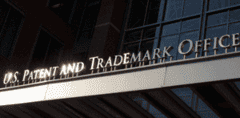米国特許商標庁 動画
![]()
ブランドを燃やさないでください:レストランの知的財産
Businesses at home and abroad are becoming more and more aware of the value and benefits of a U.S. trademark registration. Unfortunately, along with the historic surge of new trademark filings over the past year (see our blog on the surge), the USPTO has also seen an increase in suspicious submissions ranging from inaccurate to fraudulent.
情報源: Director’s Forum: A Blog from USPTO’s Leadership

![]()
ランハム法75周年
ランハム法75周年記念式典
続きを読む“米国特許商標庁 (USPTO) 商標_動画 (embedded) vol.24”
The U.S. Patent and Trademark Office is swimming in new applications, with the biggest rate of increase coming from China.
情報源: China is flooding the U.S. with trademark applications and no one is sure why | Fortune
記事によると、2010年には、中国を拠点とする出願人からのものの数字は1%未満でしたが、2021年のすべての商標出願の29%は中国を拠点とする出願人からのものでした。指摘されている大きな問題の1つは、中国の地方自治体が米国の商標を登録するために企業や個人に支払いをしているということで、中国の地方自治体が自国の企業に世界中の知的財産に投資し、グローバルブランドを所有することを望んでいることに拠る様です。
![]()
Since last fall, trademark applications from U.S. and foreign applicants have surged to unprecedented levels. As of June 17, the increase is roughly 63% over last year, which translates to about 211,000 more applications. And in December 2020 alone, the USPTO received 92,608 trademark applications, an increase of 172% over December 2019. This surge has doubled the number of applications waiting to be examined and increased waiting times at various stages in our processes
情報源: Director’s Forum: A Blog from USPTO’s Leadership
米国では6月17日の時点で去年より63%の連邦商標登録の出願増となっています。去年の12月だけでも92608件の出願(172%増加)がありました。新型コロナによりE-Commerceにシフトした業態の変化が起きているとみています。
![]()
鬼滅の刃を巡る争いは、米国特許商標庁 でも展開しており、商標NEZUKOのタグ付きの写真を使用証拠として出願されたSer.90246234に対して集英社は5月19日付けで異議申立(Opposition)を行っています。出 …
Company that provides alt-root domain names filed trademark applications for new extensions. Unstoppable Domains, a company that sells alt-root domain names that use blockchain technology, recently filed trademark applications with the U.S. Patent and Trademark Office (USPTO) for future namespaces. The company filed applications for .nft, .doge, .web3, .dao, .bch, .blockchain, .go, .x, .888 and […]
![]()